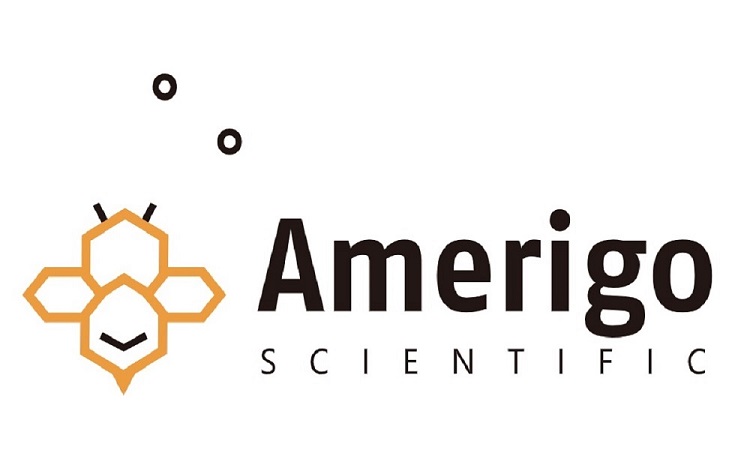Amerigo Scientific
Enantiodifferentiating geometrical photoisomerizations of (Z,Z)-1,3-cyclooctadiene was studied using “cyclodextrin nanosponge”, as a supramolecular sensitizing host. Dendrimer-encapsulated Pd-Rh bimetallic nanoparticle catalyzed partial hydrogenation of 1,3-cyclooctadiene has been reported.
More Information
Supplier Page
Amerigo Scientific
1,3-Di-o-tolylguanidine is a selective σ-receptor agonist. 1,3-Di-o-tolylguanidine is σ site ligand and its interaction with dopamine drugs were studied in Wistar rats and Albino Swiss mice.
More Information
Supplier Page
Amerigo Scientific
The solute-solvent nuclear overhauser effects (NOEs) of 1,3-di-tert-butylbenzene was studied in solvents composed of tetramethylsilane, perfluoro-tert-butyl alcohol and carbon tetrachloride.
More Information
Supplier Page
Amerigo Scientific
1,3-Diacetylbenzene is an δ-diketone. It induces neuropathological changes in the rodent central and peripheral nervous systems.
More Information
Supplier Page
Amerigo Scientific
1,3-Diaminoguanidine monohydrochloride undergoes condensation reaction with:4-isothiocyanato-4-methylpentane-2-one to yield condensed pyrimidinesvarious aldehydes and ketones to yield bis guanidine derivatives
More Information
Supplier Page
Amerigo Scientific
1,3-Dibenzoylbenzene ([3-(benzoyl)phenyl]-phenyl-methanone, m-Dibenzoylbenzene) is a diarylketone derivative. It has topologically pseudogenerate Π-LUMO′s (lowest unoccupied molecular orbital). Its synthesis from benzene has been reported. Crystal structure studies suggest that its crystals are orthorhombic and exhibit space goup Pbca.
More Information
Supplier Page
Amerigo Scientific
1,3-Dibenzoylpropane is a 1,3-diaroylpropane. 1,3-Dibenzoylpropane is formed during hydroxocobalt(III) Schiff base complexes catalyzed selective aldol reaction of dibenzoylmethanes with formaldehyde in methanol.
More Information
Supplier Page
Amerigo Scientific
Amerigo Scientific
Amerigo Scientific
1,3-Dibromo-5-octyl-4H-thieno[3,4-c]pyrrole-4,6(5H)-dione is a thienopyrrolodione (TPD) based electron acceptor material (n-type semiconductor) which is used widely for organic photovoltaic (OPV) applications. They have very powerful electron withdrawing capability. TPD based conjugated polymers have exhibited a Power Conversion Efficiency (PCE) of as high as 7. 3% in bulk heterojunction polymer solar cells.
More Information
Supplier Page
Amerigo Scientific
1,3-Dibromoadamantane is reported to react with diphenylphosphide ions (Ph2P-) under photostimulation by the SRN1 mechanism. The viscosity-dependent retarding effect of 1,3-dibromoadamantane in highly viscous polymeric chlorotrifluoroethene has been studied by 13C NMR relaxation measurements. Preparation of 1,3-dibromoadamantane via dibromination of adamantine has been reported.
More Information
Supplier Page
Amerigo Scientific
1,3-Dibromobenzene undergoes solid-supported [KF-Al2O3] palladium-catalyzed polyarylation reaction with phenyl boronic acid under microwave irradiation to yield conjugated polyaryls.
More Information
Supplier Page
Amerigo Scientific
1,3-Dibromotetrafluorobenzene is a colorless liquid. 1,3-Dibromotetrafluorobenzene crystallizes with 4,4′-dipyridyl to form the noncovalent copolymers.
More Information
Supplier Page
Amerigo Scientific
1,3-Dichloro-2-(chloromethyl)-2-methylpropane is a halogenated hydrocarbon. It is formed during the light induced reaction of diazomethane with chloroform.
More Information
Supplier Page
Amerigo Scientific
1,3-Dichloro-2-propanol is a food processing contaminant. Biotransformation of 1,3-dichloro-2-propanol to epichlorohydrin by the whole cells of recombinant Escherichia coli via resin-based in situ product removal has been investigated.
More Information
Supplier Page
Amerigo Scientific
1,3-Dichloro-5-nitrobenzene was tested for fungitoxicity against Aspergillus niger, A. oryzae, Trichoderma viride, Myrothecium verrucaria and Trichophyton mentagrophytes.
More Information
Supplier Page
Amerigo Scientific
1,3-Dichloroacetone has been identified as a metabolite of 1,3-dichloropropanol by TLC. Kinetics of the reversible hydration of 1,3-dichloroacetone have been studied spectrophotometrically in solutions of water in dioxan and in acetonitrile.
More Information
Supplier Page
Amerigo Scientific
1,3-Dichlorobenzene is a thermodynamically favoured isomer of 1,4-dichlorobenzene. The heat capacity at constant pressure and density of 1,3-dichlorobenzene was measured in the temperature range from (283. 15 to 353. 15)K.
More Information
Supplier Page


